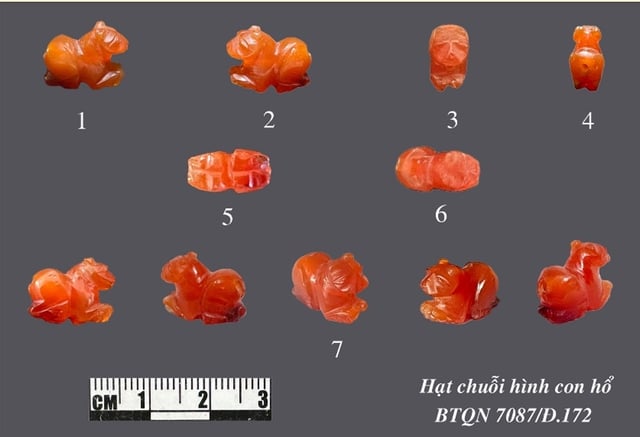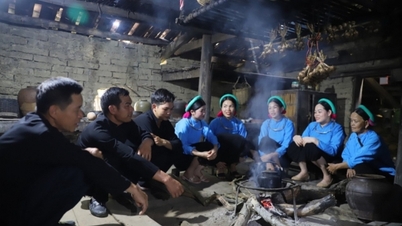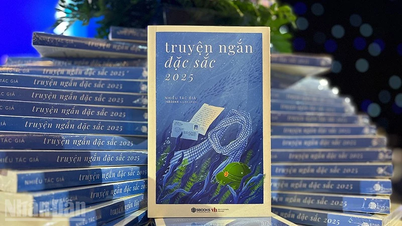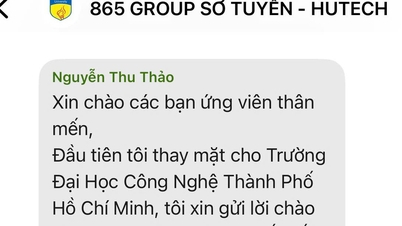The Bird and the Tiger Lai Nghi
The national treasures, the Laiyi tiger and water bird agate beads, were discovered in an intact cultural layer at the Laiyi burial site. They are all beads with holes for threading a string.

Different angles of the tiger rosary
PHOTO: PROVIDED BY THE DEPARTMENT OF CULTURAL HERITAGE
The agate beads carved with the image of a water bird are small in size but the shape of the animal is depicted in quite detail. The artifact is shaped like a bird with a beak that is bent down like a pelican's beak, a short and large beak, two bulging eyes, a rather large crest on the head, a short tail, short wings, a rather plump body, with a hole running from the chest to the tail. Some researchers believe that this is a water bird, possibly a flamingo. This bird has colorful feathers and lives commonly in the swamps of Southeast Asia. "On the face and body of some ancient bronze drums in Vietnam, the ancients depicted the flamingo next to deer, toads, storks, herons, and pelicans," the national treasure dossier said.
The tiger-shaped beads are detailed with a rather plump tiger body. At first glance, the lying position is similar to that of a cow, but the head is shaped like a tiger's head. Details such as the eyes, nose bridge and nose, and ears are meticulously and vividly carved.
According to researchers, two agate artifacts in the shape of a water bird and a tiger are the only specimens discovered in the Sa Huynh culture in Vietnam. Found during excavation, in the original location, right in the cultural layer, this artifact contains important scientific information for the study of the Sa Huynh culture.
The agate animal artifacts in Lai Nghi burial site are artifacts created from hard, small-sized stone. However, they are shaped in detail, clearly showing the features of each body part on all sides, including the underside of the animal. The sophisticated, complex and meticulous shaping technique in every small detail of these two artifacts shows the patience, meticulousness and high technique of the artisans.
The treasure records show that the observation of the artifacts shows that the techniques of chiseling - sawing - drilling - grinding - polishing were done carefully by the artisans, with the method appropriate to the material. In addition, to create an accurate hole for this type of artifact, it also requires a suitable drill, precise hole drilling technique, hole depth and hole diameter appropriate to the layout of the artifact.
Researchers believe that these holes were probably drilled with a small and delicate drill bit, most likely a diamond or, more commonly, a jasper drill bit. Overall, the uniqueness of these two artifacts lies in the sophisticated craftsmanship, the complex process, and the skillful and precise execution.
Experienced trader, sophisticated consumer
The carnelian material of the two artifacts also reveals many things. This type of stone appeared in a cemetery in Bulgaria, about 6,500 years ago. Carnelian jewelry is found in the Balkans, Greece, the Middle East and other ancient regions of the world . However, the mining and processing of carnelian stone is mainly concentrated in countries such as Brazil, India, the United States and Uruguay. It is worn to support desire and love, to ignite passions that may have faded over time. This material also shows the trade between Sa Huynh and other regions.
According to a study by Dr. Tran Duc Anh Son, among the agate beads found at the Lai Nghi site, there are three very special ones: the first one is shaped like a lion, the second one is shaped like a bird, and the third one is made by acid etching. "The animal-shaped agate beads found in the Sa Huynh culture suggest a connection with the animal-shaped beads found by Chinese archaeologists at the Phong Mon Linh site and at the Duong Bach site, both in Ha Pho district (Guangxi, China)," Mr. Son wrote.
The treasure records show that the tiger or water bird artifacts made of agate, sophisticated and artistic like those discovered in Lai Nghi, have also been seen in some places in the world such as Thailand and Myanmar. Professor Ian C. Glover and his colleagues believe that the agate animal beads discovered in Thailand originated from India, and have connections with Buddhism.
Therefore, the Lai Nghi water bird and tiger shaped agate beads not only reflect the cultural exchange process but also show that the ancient Sa Huynh residents were experienced traders, sophisticated consumers, and the richest in the trade network on the East Sea. It also shows that Lai Nghi had a favorable location for trade activities between Sa Huynh (near Hoi An, Quang Nam ) and other areas. From there, it is also possible to imagine the formation of the first primitive ports or pre-ports in the trade network or maritime trade network in the prehistoric period. (continued)
Source: https://thanhnien.vn/doc-la-bao-vat-quoc-gia-sanh-trang-suc-ma-nao-nhu-nguoi-lai-nghi-185250708222410568.htm








































































































Comment (0)